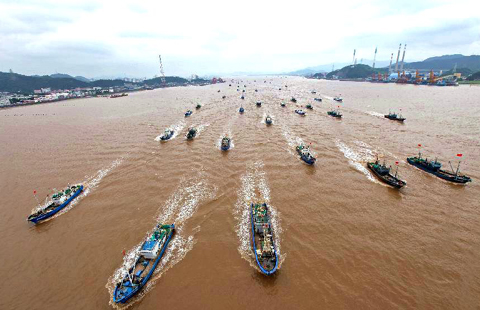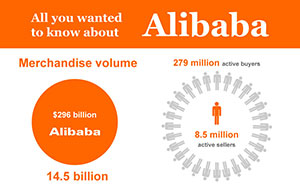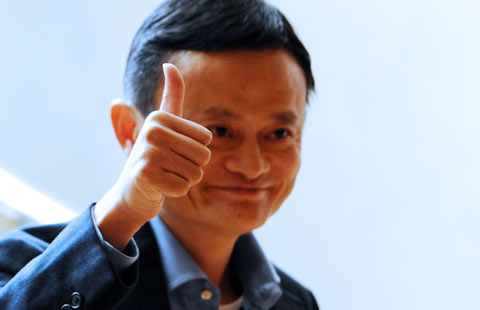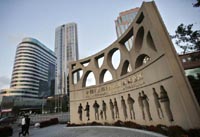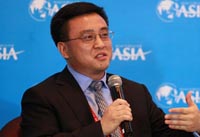PBOC acts to shore up liquidity
(Bloomberg) Updated: 2014-09-18 08:34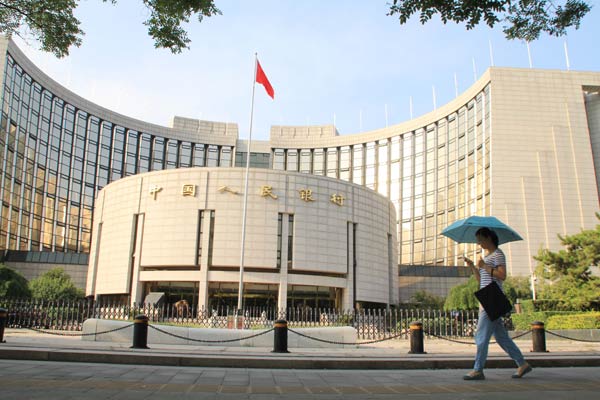 |
|
The headquarters of the People's Bank of China in Beijing. The central bank will reportedly inject 500 billion yuan ($81 billion) into the nation's largest banks. SHI YAN/CHINA DAILY |
Top five Chinese lenders may get $81b infusion from central bank, say sources
The People's Bank of China, the central bank, joined its European counterpart in boosting liquidity to address weakening growth, underscoring a divergence in direction among the world's biggest economies as the US reduces stimulus.
The PBOC is injecting 500 billion yuan ($81 billion) into the nation's largest banks, according to a government official familiar with the matter, signaling the deepest concern yet with an economic slowdown.
US Federal Reserve Chair Janet Yellen will announce another $10 billion cut to its monthly bond purchases after this week's meeting, economists forecast, as she steers toward gradual interest-rate increases.
China's credit expansion builds on targeted measures to shore up growth while stopping short of broad-based stimulus seen in the US in the wake of the global financial crisis and still being pushed in Europe and Japan.
 |
 |
"It's like quantitative easing with Chinese characteristics," said Louis Kuijs, Royal Bank of Scotland Group Plc's chief greater China economist in Hong Kong, who formerly worked at the World Bank. "The threat is that growth is slowing down below the comfort level of policy makers and that will then also warrant further easing steps."
The PBOC will funnel 100 billion yuan each to the five biggest banks for a three-month period, said the official, who asked not to be identified because the measure has not been formally announced.
"It shows China's monetary policy is leaning toward easing, and the easing stance may last throughout next year," said Hua Changchun, a China economist at Nomura Holdings Inc in Hong Kong. The lack of an official announcement shows that the PBOC "doesn't want to send a strong signal" of policy easing, Hua said.
Bank stocks rallied in Hong Kong, the yuan halted a four-day slide and one-year interest-rate swaps dropped to the lowest level since June.
Not all analysts saw the move as policy stimulus.
Chang Jian, chief China economist at Barclays Plc in Hong Kong, said it was "a normal liquidity operation".
The injection is "mainly aimed at providing liquidity to pre-empt potential liquidity shortages in the banking system in the coming weeks," Chang wrote. Cash needs for the coming National Day holiday on Oct 1, along with initial public offerings of stock, are among the reasons she cited.
The weakest industrial-output expansion since the global financial crisis and moderating investment and retail sales growth shown in data released on Saturday underscored the risks of a deepening economic slowdown. Those readings followed a second straight drop in imports and a 40 percent decline in the broadest measure of new credit for August, as well as indicators showing a manufacturing pullback.
The injection marks "the first clear policy response to weak August data" on the economy, Goldman Sachs Group Inc economists including Beijing-based Song Yu wrote in a research note.
- Apple to unveil new iPads, operating system on Oct 21: report
- New momentum over China-Singapore economic corridor
- Home prices decline in most Chinese cities in August
- China's high-growth aviation gains global concerns
- Cambodian telecom firm cooperates with Huawei to build 4G network
- Trade growth is Dubai's new 'desert miracle'
- Baijiu industry banks on surge in online sales
- More tax breaks for small Chinese firms
